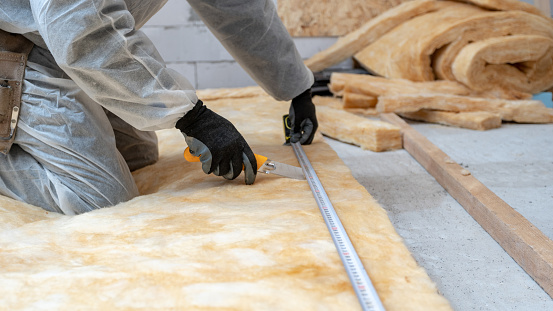
Home Performance and Energy Code – The Devil is in the Details
As energy codes and above-code energy efficiency certification programs evolve and progress, the natural question is “Where do we go from here?” The simple and easy answer is to increase insulation and window efficiency requirements. This will certainly increase building costs but may not increase the building performance at a proportional rate. Why is this? As energy efficiency specification requirements increase, construction details become more and more important.
Anyone interested in the efficiency of buildings, either as a hobby or as a profession, is familiar with the concept of the diminishing returns of more insulation. An analogy of the concept is as follows:
If a person is outside on a cold winter day wearing just a T-shirt and they put on one coat, their comfort level will increase dramatically. If they put on a second coat, the change in their comfort will not be nearly as dramatic as it was with the first coat. If that person adds a third coat, the change will be even less dramatic.
The same principle applies to insulating homes. The difference betweenR 0 to R 10 is dramatic. The difference between R60 to R70 is negligible, even though the cost may be similar. This is relevant because homes are already wearing a “coat” and simply adding one or two more may not be the best way to make homes perform better.
Like so many other things in life, the devil is in the details. For insulation to perform the way it is intended and tested, it must be installed correctly and even carefully. This means the insulation is in direct contact with all six sides of the assembly, and there are no gaps, voids, or compressions. The manufacturer’s installation instructions state this and the code requires insulation to be installed according to the manufacturer’s specifications, but this rarely happens. Before additional insulation is added, it is important to ensure the existing insulation is properly installed.
Insulation is far from the only aspect of home efficiency where this principle applies. Just as important as, if not more so, than having insulation correctly installed is having a properly designed and installed HVAC system. For an HVAC system to operate at its peak efficiency, it must be correctly sized according to the specific heating and cooling needs of the home, in which it is installed, and specific to the location and orientation of the home. The heat loss/gain for each space in the home must be correctly calculated and then each duct run in the home must be sized correctly to deliver the precise amount of conditioned air to keep each space in the home at the correct temperature. It is tempting and remarkably common for homes to have oversized HVAC equipment. People incorrectly believe that bigger is better when it comes to HAVC equipment. Not only is it bigger, not better, but it is also worse for achieving peak and efficient performance. Once again, the code states that HVAC equipment should be installed according to the manufacturer’s requirements, which includes everything mentioned above.
-
-
-
- Attention to detail and correct installation of home components is becoming the greatest differentiator between homes built to code and high-performance homes. But does it make that bigof a difference? In short, yes.
- Improperly installed insulation can be derated up to 30% by not being correctly installed.
- HVAC systems that are oversized, and/or have improperly designed and installed duct systems, operate at a fraction of the efficiency of a properly installed system and the home often suffers from comfort issues.
-
-
Homes without proper air sealing details sometimes leak 4 or 5 times the amount of air allowed by code.
As codes and building efficiency programs continue to evolve and become more mature, look for more focus on getting the details right. This can have a far greater impact on the health, comfort, and efficiency of the home than specifying increased energy efficiency of components.

Credit Getty Images
– Dr. Energy

0 Comments